So Far, Research Isn’t Promising, but Scientists Are Still Testing New Zinc Compounds

The Essential Info
From the research we have thus far, topical zinc by itself is unlikely to clear acne. But researchers have studied only a small number of zinc compounds for their effectiveness in treating acne, so more research is needed to identify what zinc compound, if any, may prove beneficial in treating or preventing acne.

The Science
Zinc is an essential micronutrient in our bodies. The human body contains around 2-3 g of zinc, which equates to about half of a teaspoon, most of which is found in muscle and bone. However, zinc is important for all parts of the body, including the skin.
In the skin, zinc deficiency may lead to the development of acne as well as some other skin disorders. This has led scientists to wonder whether topical zinc might be useful in the treatment of acne. Results of studies so far show that zinc is less than impressive when it comes to combatting acne. However, it may be beneficial in combination with other acne medications.1,2
Topical Zinc Compounds
You may be most familiar with topical zinc when it comes to sunscreens. Picture the sunscreens that lifeguards sometimes wear that are bright white on their nose. That’s zinc oxide. Left to its own accord, zinc does not penetrate the skin. This inability makes zinc an effective ingredient in sunscreen since it sits on top of the skin where it absorbs and reflects the sun’s rays.
However, for any compound to treat acne or other skin diseases, it needs to absorb into the skin. Scientists have developed new zinc compounds that do just that, including:
- Zinc sulfate
- Zinc acetate
- Zinc ascorbate
- …and others
The differences in the type of zinc can cause slight changes in how the zinc compound acts on the skin.3
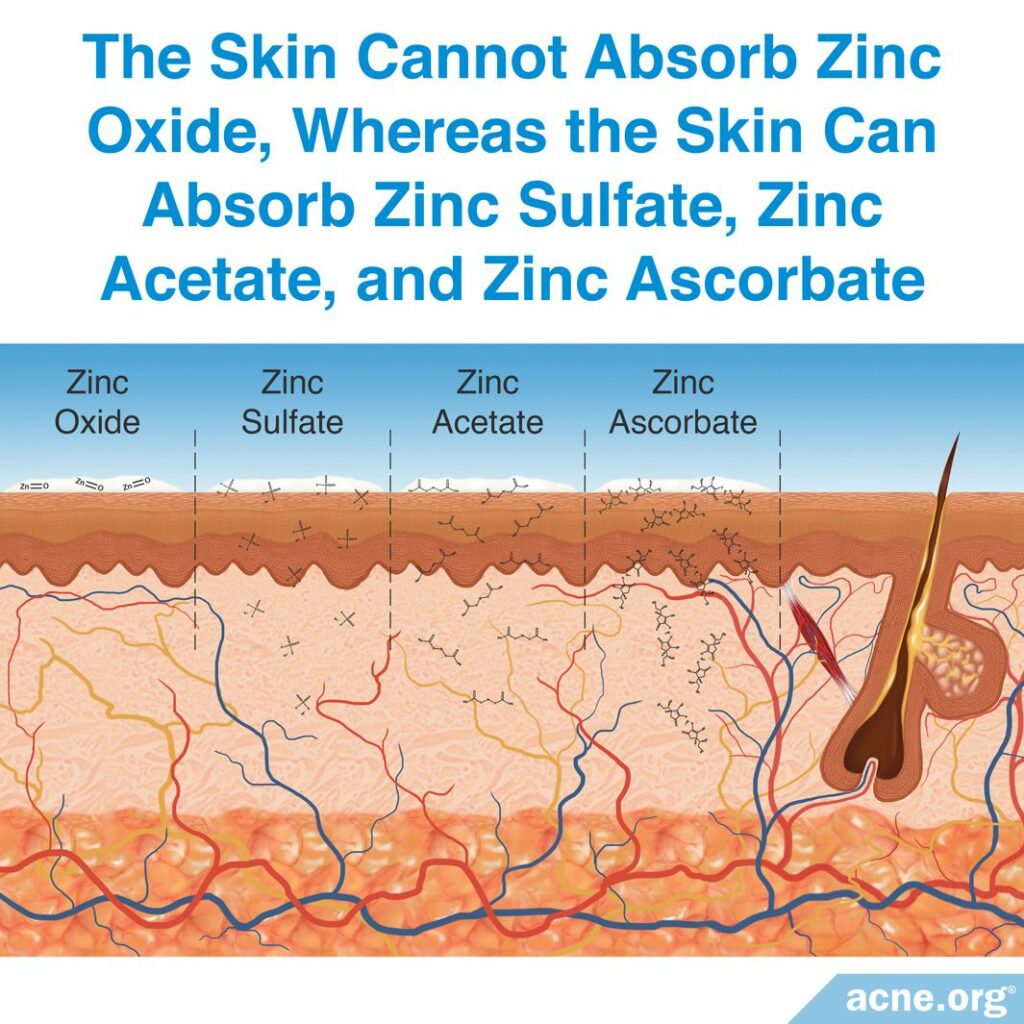
What the Research Says
Topical Zinc + Topical Antibiotic = Modest Improvement
Two studies show that topical zinc (zinc acetate & zinc octoate), combined with the topical antibiotic erythromycin, provides a modest improvement in acne.5,6 One study also found that zinc acetate combined with a different topical antibiotic, clindamycin, might help improve acne and reduce the number of acne bacteria on the skin.7 However, in each of these studies, the topical antibiotic may have been solely responsible for the improvement in acne, and because the researchers did not test zinc on its own, we can’t say what part zinc may have played.
Expand to read details of studies

A 1980 study published in the Journal of the American Academy of Dermatology examined the effect of topical zinc combined with erythromycin on acne. To perform the study, the researchers divided a group of 141 study participants into four groups:
- Group 1 applied a 1.2% zinc acetate and 4% erythromycin liquid twice daily for 10 weeks.
- Group 2 applied a 1.2% zinc octoate and 4% erythromycin gel twice daily for 10 weeks.
- Group 3 took a 250mg oral antibiotic twice daily for 10 weeks.
- Group 4 was the control group, which did not apply a solution or take a supplement.
Researchers examined the participants every two weeks for the full 10-week study period for a reduction in acne severity and number of acne lesions. They measured acne severity by calculating both the number and type of acne lesion that covered the face and assigned it to a grading scale of 0 – 8. For example, an acne severity grade of 2 meant that ¼ of the face was covered with small papules and comedones (clogged pores), whereas an acne severity grade of 6 meant that ¾ of the face was covered with large papules and comedones.
In the study’s conclusion, the researchers found that the zinc acetate/erythromycin solution resulted in a 38% decrease in overall acne severity and that the erythromycin/zinc octoate solution resulted in a 28% decrease. This was equivalent to the third group’s acne severity decrease, suggesting that both topical zinc/erythromycin combinations were as effective at reducing acne as the oral antibiotic taken by the third group. Interestingly, the zinc acetate/erythromycin liquid was the only combination that resulted in fewer acne lesions, decreasing from an average of 29 to 20 over the course of the study. Although this study shows that a zinc/erythromycin combination was effective at reducing acne severity and number of lesions, it did not examine the effectiveness of topical zinc by itself. Therefore, the researchers concluded that zinc acetate and zinc octoate were effective at reducing acne severity when used in combination with erythromycin. We cannot conclude that it has the same effect on acne as the zinc/erythromycin combinations.5
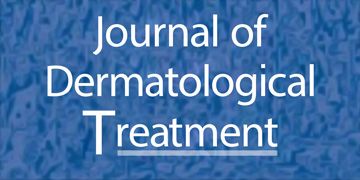
Similarly, a 2019 study published in the Journal of Dermatological Treatment tested the efficacy of a zinc/erythromycin combination at treating mild-to-moderate acne. The researchers divided 102 study participants, who were between 13 and 25 years old, into two groups:
- Group 1 applied a 2% erythromycin gel daily for 3 weeks.
- Group 2 applied a 2% erythromycin and 1.2% zinc acetate gel daily for 3 weeks.
The researchers counted acne lesions and graded the severity of the participants’ acne before starting the treatment and once a week throughout the treatment. They found that the treatment reduced the number of lesions and acne severity in both groups. However, there was no significant difference between the two groups: in other words, erythromycin gel alone was just as effective as the erythromycin/zinc combination.6 This suggests that most of the medicinal effect was due to the topical antibiotic, and whatever additional benefit zinc may have provided was likely very small. However, to be certain of this, we would want to see a study that directly tested zinc by itself on acne patients.
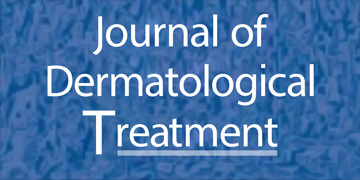
A 2005 study published in the Journal of Dermatological Treatment tested the efficacy of a zinc/clindamycin combination for treating mild-to-moderate acne. The researchers divided 246 study participants, who were between 12 and 40 years old, into 3 groups:
- Group 1 applied a gel containing 1% zinc acetate and 1% clindamycin once a day for 16 weeks.
- Group 2 applied a gel containing 1% zinc acetate and 1% clindamycin twice a day for 16 weeks.
- Group 3 applied a lotion containing only 1% clindamycin twice a day for 16 weeks.
To determine whether these treatments helped with acne, the researchers counted the total number of acne lesions on the participants’ skin before starting treatment as well as 6, 12, and 16 weeks after starting treatment. They found that the treatment reduced the number of acne lesions equally well in all 3 groups. In other words, clindamycin lotion alone was just as effective as the zinc/clindamycin combination. In addition, the zinc/clindamycin combination was equally effective whether used once or twice a day. The researchers also found that each of the treatments had reduced the number of acne bacteria on the participants’ skin by an approximately equal amount. This provided additional evidence that zinc/clindamycin gel applied once or twice a day was similar in efficacy to clindamycin lotion applied twice a day.7 This suggests that clindamycin and not zinc was responsible for most of the medicinal effect. Still, the researchers concluded that zinc/clindamycin might have a place in treating acne, because applying a zinc/clindamycin gel once a day would be a simpler regimen for patients to remember and stick to compared to applying a clindamycin lotion twice a day.
Topical Zinc on Its Own = No Evidence of Acne Improvement
Certain forms of zinc might have medicinal benefits for acne when used on their own, but we have no research that shows that any zinc compound on its own will clear acne.
So far, we know that:
- Zinc sulfate by itself seems to have no effect on acne.
Researchers have performed two studies examining whether topical zinc sulfate is effective at improving acne when applied by itself instead or in combination with other substances, like erythromycin or other antibiotics. This research found that zinc sulfate on its own is not an effective acne treatment.
Expand to read details of studies
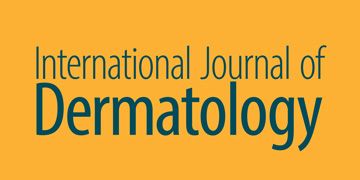
A 1985 study published in the International Journal of Dermatology examined whether topical zinc sulfate was effective in the treatment of acne. To perform the study, the researchers divided 30 participants with mild to moderate acne into two groups:
- Group 1 applied a topical 2% zinc sulfate solution three times daily for 12 weeks.
- Group 2 applied a topical control solution, which contained no zinc, three times daily for 12 weeks.
After 12 weeks, the researchers found that no change in acne occurred in either group. However, participants who applied the zinc solution did report skin irritation as a side effect, so the researchers concluded that “topical zinc therapy alone is not a significant benefit in the treatment of acne.”8

A 2008 study published in the Saudi Medical Journal compared the effectiveness of a 5% zinc sulfate solution to that of a 2% tea solution in the treatment of acne. To perform the study, 47 participants with mild acne were assigned to two groups:
- Group 1 applied a 5% zinc sulfate solution twice daily for two months.
- Group 2 applied a 2% tea solution twice daily for two months.
At the end of the study, the researchers observed that 15% of the participants using the zinc sulfate solution experienced at least a 50% reduction in the number of acne lesions; 50% of participants had a 10 – 50% reduction, and 35% had less than a 10% reduction. Overall, the zinc sulfate solution caused the average number of papules to decrease from 19.5 to 14.4 and of pustules to decrease from 19.4 to 15.2. These papule and pustule counts were not statistically significant, meaning that the observed decrease in acne lesions could be due just to random variations in acne lesion counts and not due to the treatment. Further, the study reported that 25% of patients reported a burning sensation, and 10% of patients reported an itching sensation after using the zinc sulfate solution. This study concluded that zinc sulfate was not an effective treatment for acne.9
To sum up, we don’t know which, if any, zinc compounds might improve acne when used on their own. Most likely, if zinc does have some medicinal benefit for acne, any improvement in symptoms would be small.
How Might Zinc Help with Acne?
Although the research thus far has not produced impressive results when it comes to zinc and acne, zinc remains an interesting area of study because it is such an important nutrient in our bodies, including in our skin.
To that end, scientists have performed several studies examining the effect of topical zinc along with erythromycin on two of the most important factors that lead to acne:
- Skin oil production – more skin oil normally means more acne
- Acne bacteria growth – an overgrowth of acne bacteria can lead to the redness and soreness we see in acne lesions10
It appears that zinc might be able to help with both of these factors. Let’s have a look at the research.
Topical Zinc + Topical Antibiotic = Lowered Skin Oil Production
Researchers have performed two studies examining the effect of topical zinc (zinc acetate), again combined with erythromycin, on skin oil production. Both studies found that topical zinc + erythromycin was effective at reducing skin oil production.11,12
How do we know if it was the zinc or the topical antibiotic that reduced skin oil production? Luckily, because of the way one of the studies was designed, the researchers were able to conclude that zinc itself was likely a contributing factor to the skin oil-reducing activity.12
Expand to read details of studies
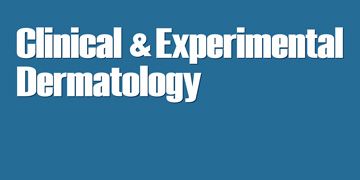
A 1993 study published in the journal of Clinical and Experimental Dermatology examined whether an erythromycin/zinc acetate solution was effective at reducing skin oil (sebum) production. To perform the study, the researchers had five men apply a solution of 4% erythromycin and 1.2% zinc acetate to half of their forehead twice daily for 18 weeks. The second half of the forehead was not treated but served as the study’s control. The researchers evaluated sebum output once every three weeks. They found that after nine weeks of treatment, the solution decreased sebum production and that this decrease lasted until the end of the study. The researchers concluded that an erythromycin/zinc acetate solution was effective at reducing sebum secretion. However, this study did not examine whether zinc by itself has the same effect on sebum secretion as it did in combination with erythromycin.11
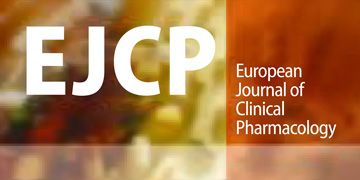
A 1995 study published in the European Journal of Clinical Pharmacology examined what effect zinc had on decreasing sebum secretion when used as zinc acetate in combination with erythromycin. To perform the study, the researchers had 14 participants apply a solution of 4% erythromycin and 1.2% zinc acetate on the left half of their forehead and a 4% erythromycin solution, with no zinc, on the right side of their forehead twice daily for 12 weeks. At the end of the study, the researchers found that only the zinc/erythromycin solution reduced sebum secretion, by 20%. This led the researchers to conclude that zinc was necessary in the solution to cause the observed reduction in sebum secretion.12
Topical Zinc + Topical Antibiotic = Less Bacteria
Researchers have performed three studies examining the effect of topical zinc compounds on acne bacteria. Two of these studies found that topical zinc (zinc acetate) + the topical antibiotic, erythromycin, was effective at reducing the number of acne bacteria in the skin of acne patients.13-15 Whether it was the zinc of the topical antibiotic that was primarily responsible for the reduction in bacteria is unknown.
One of the studies found also that zinc (zinc ascorbate), when put into a petri dish with acne bacteria, could limit the growth of the bacteria.14
Expand to read details of studies

A 1984 study published in the Journal of the American Academy of Dermatology examined what effect a zinc/erythromycin solution had on the number of acne bacteria (C. acnes) in the skin of acne patients. To perform the study, the researchers divided the 22 participants into two groups:
- Group 1 applied a 1.2% zinc acetate and 4% erythromycin solution to their skin twice daily for 10 weeks.
- Group 2 applied a placebo solution, without zinc acetate and erythromycin, to their skin twice daily for 10 weeks.
The researchers found that after 10 weeks, the group receiving the zinc/erythromycin treatment had a decreased number of C. acnes on their skin, from an average of 2.93 to 0.97 million bacteria. Further, the treatment group noticed a 59% decrease in the number of inflammatory acne lesions, while the placebo group had only a 13% decrease. The researchers concluded that the zinc acetate/erythromycin solution was able to decrease the number of C. acnes on the skin.13
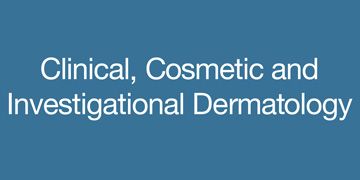
A 2011 study published in the journal of Clinical, Cosmetic, and Investigational Dermatology studied whether zinc was able to kill C. acnes in a laboratory setting. To perform the study, the researchers isolated samples of this bacteria from the skin of patients with acne. It was then stored in a laboratory and treated with either zinc ascorbate or zinc ascorbate in combination with the antibiotics, clindamycin, erythromycin, or chloramphenicol. They found zinc ascorbate was able to stop the growth of C. acnes at a small concentration of 0.064%, which included clindamycin-resistant strains. They concluded that zinc ascorbate may be useful in preventing the excessive growth of C. acnes in acne-prone skin. However, scientists need to perform this research in the skin of acne patients in order to confirm that it prevents acne in a real-life setting.14
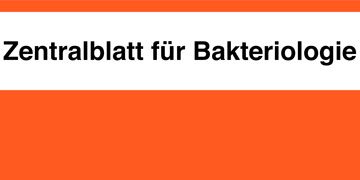
A 1999 study in the German journal Zentralblatt für Bakteriologie compared the antibacterial activity of zinc acetate alone and together with erythromycin. In the first part of the study, the researchers tested the drugs on bacteria in a petri dish to determine what concentration of each drug was necessary to stop the growth of bacteria.
Then, the researchers tested the two treatments on 32 participants. All participants applied both treatments to their skin as follows:
- One side of the forehead: Participants applied 1.2% zinc acetate twice a day for 7 days.
- Other side of the forehead: Participants applied a 1.2% zinc acetate and 4% erythromycin combination twice a day for 7 days.
For each participant, the researchers randomly chose which side of the forehead received which treatment.
The scientists measured the amount of acne bacteria in the participants’ skin oil glands before and after the 7-day treatment. They found that both treatments significantly reduced the number of bacteria in the skin oil glands. There was no difference in efficacy between the two treatments, which suggests that zinc was the main ingredient responsible for killing the bacteria. The researchers wrote, “The in vivo antibacterial efficacy on 32 acne patients supports the hypothesis that the antibacterial effect of [zinc acetate together with erythromycin] in short-term treatment can be mostly attributed to [zinc acetate].”15
Conclusion
In short, topical zinc, on its own, has not yet been shown to be an effective treatment for acne, but researchers continue to develop and test new zinc compounds. Since zinc may reduce skin oil production and acne bacteria growth, there just might come a time when topical zinc has a place in acne treatment.
References
- Plum, L. M., Rink, L. & Haase, H. The essential toxin: impact of zinc on human health. Int J Environ Res Public Health 7, 1342 – 65 (2010). https://www.ncbi.nlm.nih.gov/pubmed/20617034
- Prasad, A. Clinical manifestations of zinc deficiency. Annu Rev Nutr 5, 341 – 363 (1985). https://www.annualreviews.org/doi/abs/10.1146/annurev.nu.05.070185.002013?journalCode=nutr
- Markus, G. Zinc citrate – a highly bioavailable zinc source. Wellness Food Europe 18 – 22 (2013). https://www.jungbunzlauer.com/fileadmin/content/_PDF/PRINT_PROJECTS/Article_facts/Zinc_citrate_a_highly_bioavailable_zinc_source_Nov14.pdf
- Cervantes, J., Eber, A. E., Perper, M., Nascimento, V. M., Nouri, K. & Keri, J. E. The role of zinc in the treatment of acne: A review of the literature. Dermatol Ther 31(1) (2018). https://www.ncbi.nlm.nih.gov/pubmed/29193602
- Feucht, C. L., Allen, B. S., Chalker, D. K. & Smith, J. G. Jr. Topical erythromycin with zinc in acne: A double-blind controlled study. J Am Acad Dermatol 3, 483 – 491 (1980). https://www.ncbi.nlm.nih.gov/pubmed/6452464
- Sayyafan, M. S., Ramzi, M & Salmanpour, R. Clinical assessment of topical erythromycin gel with and without zinc acetate for treating mild-to-moderate acne vulgaris. J Dermatolog Treat 18, 1-4 (2019). https://www.ncbi.nlm.nih.gov/pubmed/30998422
- Cunliffe, W. J., Fernandez, C., Bojar, R., Kanis, R., West, F.; Zindaclin Clinical Study Group. An observer-blind parallel-group, randomized, multicentre clinical and microbiological study of a topical clindamycin/zinc gel and a topical clindamycin lotion in patients with mild/moderate acne. J Dermatolog Treat 16, 213-218 (2005). https://pubmed.ncbi.nlm.nih.gov/16302325/
- Cochran, R. J., Tucker, S. B. & Flannigan, S. A. Topical zinc therapy for acne vulgaris. Int J Dermatol 24, 188 – 190 (1985). https://www.ncbi.nlm.nih.gov/pubmed/3158620
- Sharquie, K. E., Noaimi, A. A. & Al-salih, M. M. Topical therapy of acne vulgaris using 2% tea lotion in comparison with 5% zinc sulphate solution. Saudi Med J 29, 1757 – 1761 (2008). https://www.ncbi.nlm.nih.gov/pubmed/19082228
- Liu, H., Yu, H., Xia, J., Liu, L., Liu, G. J., Sang, H. & Peinemann, F. Topical azelaic acid, salicylic acid, nicotinamide, sulphur, zinc and fruit acid (alpha-hydroxy acid) for acne. Cochrane Database Syst Rev 5, CD011368 (2020). https://pubmed.ncbi.nlm.nih.gov/32356369/
- Pierand, G. E. & Pierard-Franchimont, C. Effect of a topical erythromycin-zinc formulation on sebum delivery. Evaluation by combined photometric multi-step samplings with Sebutape ®. Clin Exp Dermatol 18, 410 – 413 (1993). https://www.ncbi.nlm.nih.gov/pubmed/8252759
- Pierard-Franchimont, C., Goffin, V., Visser, J., Jacoby, H. & Pierard, G. A double-blind controlled evaluation of the sebosuppressive activity of topical erythromycin-zinc complex. Eur J Pharmacol 49, 57 – 60 (1995). https://link.springer.com/article/10.1007/BF00192359
- Strauss, J. S. & Stranieri, A. M. Acne treatment with topical erythromycin and zinc: effect on Propionibacterium acnes and free fatty acid composition. J Am Acad Dermatol 11, 86 – 89 (1984). https://www.ncbi.nlm.nih.gov/pubmed/6234335
- Iinuma, K. et al. Susceptibility of Propionibacterium acnes isolated from patients with acne vulgaris to zinc ascorbate and antibiotics. Clin Cosmet Investig Dermatol 4, 161 – 5 (2011). https://www.ncbi.nlm.nih.gov/pubmed/22087070
- Fluhr, J. W., Bösch, B., Gloor, M. & Höffler, U. In-vitro and in-vivo efficacy of zinc acetate against propionibacteria alone and in combination with erythromycin. Zentralbl Bakteriol 289, 445-456 (1999). https://www.ncbi.nlm.nih.gov/pubmed/10603662
The post Can Topical Zinc Improve Acne? appeared first on Acne.org.
